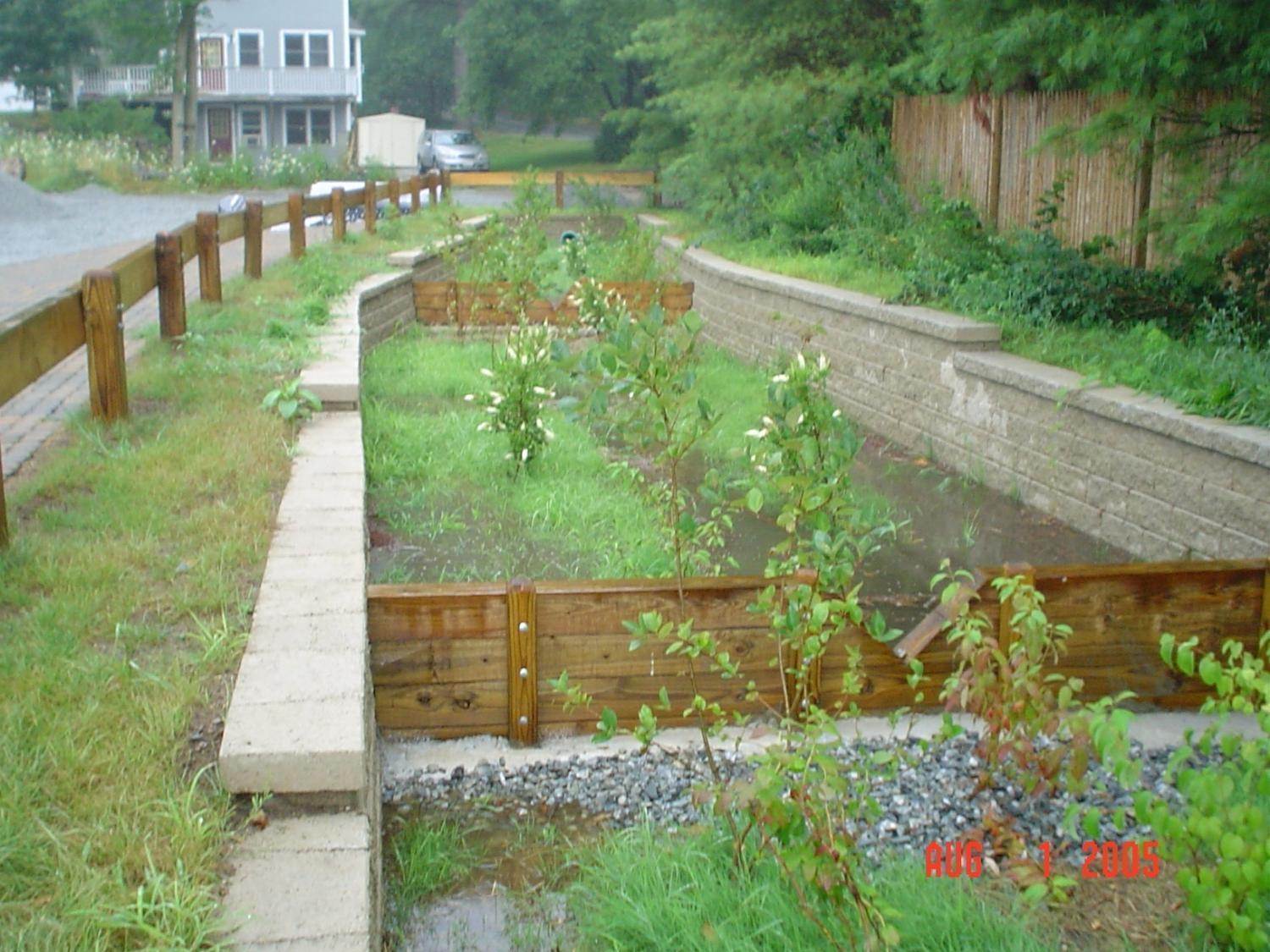Stream Daylighting

Stream daylighting project in Littleton, MA
(Photo courtesy of Geosyntec Consultants)
Description
"Daylighting" describes projects that deliberately expose the flow of a previously covered river, stream or stormwater drainage. Daylighting projects liberate waterways that were buried in culverts or pipes, or otherwise removed from view. Daylighting re-establishes a waterway in its old channel where feasible, or in a new channel threaded between the buildings, streets, parking lots, and playing fields now present on the land. Some daylighting projects recreate wetlands, ponds, or estuaries.
Applicability/Effectiveness
Stream daylighting projects can be applied to:
- Relieve choke points and flooding from under-capacity culverts;
- Increase hydraulic capacity over that provided by a culvert, by recreating a floodplain;
- Reduce runoff velocities and erosion, as a result of natural channel meandering and the roughness of the stream bottom and banks;
- Replace deteriorating culverts with open drainage that can be more easily monitored and repaired;
- Divert urban runoff from combined sewer systems before it mixes with sewage, reducing combined sewer overflows and burdens on treatment plants;
- Improve water quality by exposing water to air, sunlight, vegetation, and soil, all of which help transform, bind up, or otherwise neutralize pollutants;
- Recreate aquatic habitat and improve fish passage;
- Recreate valuable riparian habitat and corridors for wildlife movement;
- Provide recreational amenities, such as a challenging new water hazard on a golf course, a place for children to play, or a streamside bench for people to relax upon;
- Create or link urban greenways and paths for pedestrians and bicyclists;
- Beautify neighborhoods, perhaps serving as a focal point of a new park or neighborhood revitalization.
Design Considerations
- Surface stream restorations may or may not require excavation and grading to correct channel alignments and geometries, but pulling up a culvert and creating a new channel where none exists usually involves a significant amount of earthmoving. It may be necessary to haul away the spoils. These operations add expense and may complicate permitting.
- Finding the old channel can be difficult. It often involves historic research, examination of soils, and looking at the channel characteristics upstream and downstream.
- Existing surface waterways needing restoration may already have at least a little buffer around them; daylighting projects are more likely to be squeezed for space. The less space, the less chance of creating natural channel geometry and a properly vegetated riparian corridor.
- Additional hydraulic issues may be involved. It may be necessary to build up hydraulic head to put a daylighted section of stream back into a pipe at its downstream end. Daylighting projects must be carefully engineered into the overall urban stormwater management system.
- Surface stream restorations are sometimes politically easier because the problems are apparent. With buried waterways, people may be unaware that a culvert carrying a historic stream is under their feet, or that the stream’s absence means degraded water quality, lost habitat, and so on.
- Since there’s "nothing" there now, daylighting projects may require extra community education and outreach to help people visualize the potential.
- Beautify neighborhoods, perhaps serving as a focal point of a new park or neighborhood revitalization.